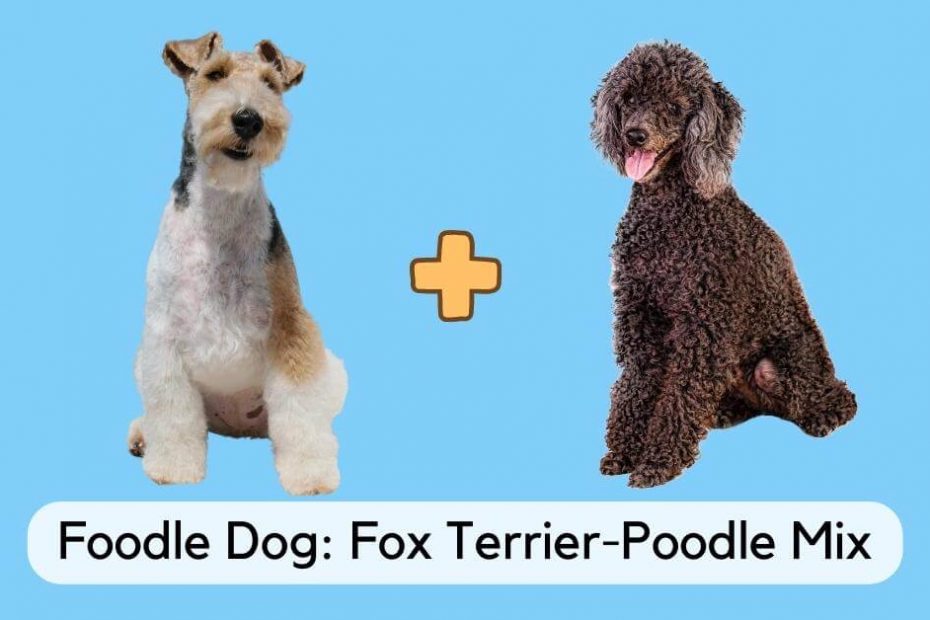This article introduces one of the cutest pets known to modern man: the Foodle dog breed. They are small, spunky, and loyal dogs that would easily fit into any household.
If you are a dog lover, I wouldn’t be surprised if you place this new Doodle dog breed at the top of your wishlist by the end of this guide.
Keep reading to learn all about this energetic mix!
Introduction to Foodles
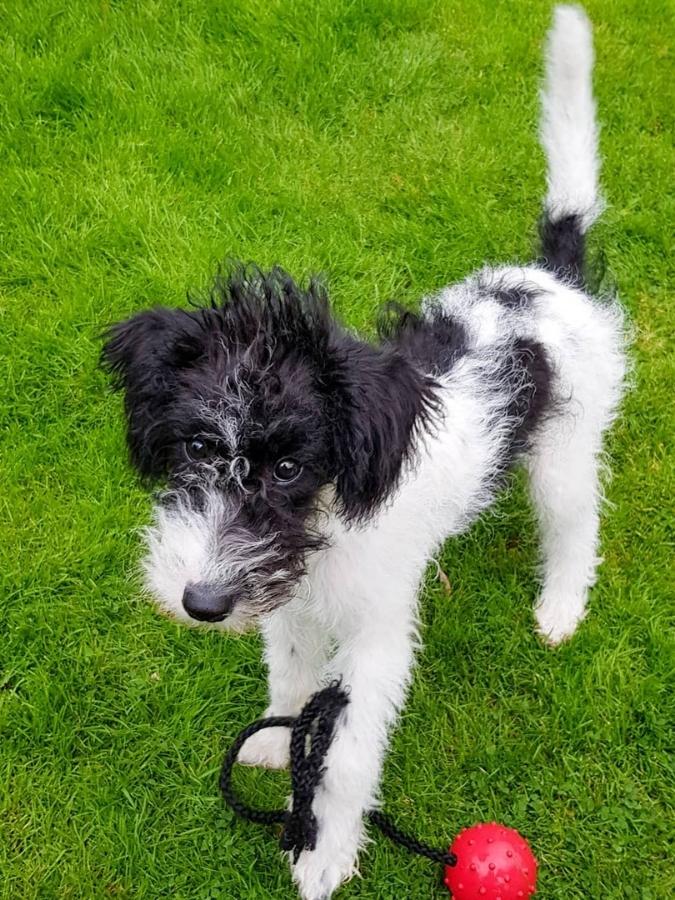
Have you ever heard of a Foodle? If not, you’re not alone. It was until recently that I came across this adorable breed. They are a new breed and given the rise of popularity in Doodles, I think they will soon become very popular as well.
A Foodle dog is a hybrid mix between a Fox Terrier and a Poodle. They can also be referred to as Foxipoo, Foxypoo, Foxdoodle, Foxidoodle, Wire Doodle, or Wire Poo.
They are small, affectionate dogs with large personalities. They have a great mix of traits and characteristics that they inherit from both of their parent breeds.
Since Foodles are a relatively new breed, there isn’t a set standard for breeding. Fox Terriers are a smaller breed, which means they can breed with a Mini Poodle to create a Foodle.
Fox Terriers can come in an even smaller size, which is called the ‘toy’ size. This is true for Poodles as well, which means a Wire Poo can be bred from a Toy Fox Terrier and a Toy Poodle. This breed variant is called a Toy Foodle.
Before I go any further, let’s take an in-depth look at the history behind both parent breeds.
Foodle Origin
Similar to many Doodle breeds, there is little documented evidence as to when the Foodle dog breed was first developed. An estimate from Wag, suggests they originated in the 1990s.
It is possible that a litter of Foodles were born by accident well before the term ‘Doodle dogs’ was in existence. Or, the first batch of Foodle puppies could’ve been bred on purpose but with no concrete data we can’t be completely certain.
Even though accurate records of the origin and history of Foodles are relatively nonexistent, there is a lot of information pertaining to the two parent breeds. Both the Fox Terrier and Poodle have a rich history that spans across hundreds of years.
Fox Terrier Breed History
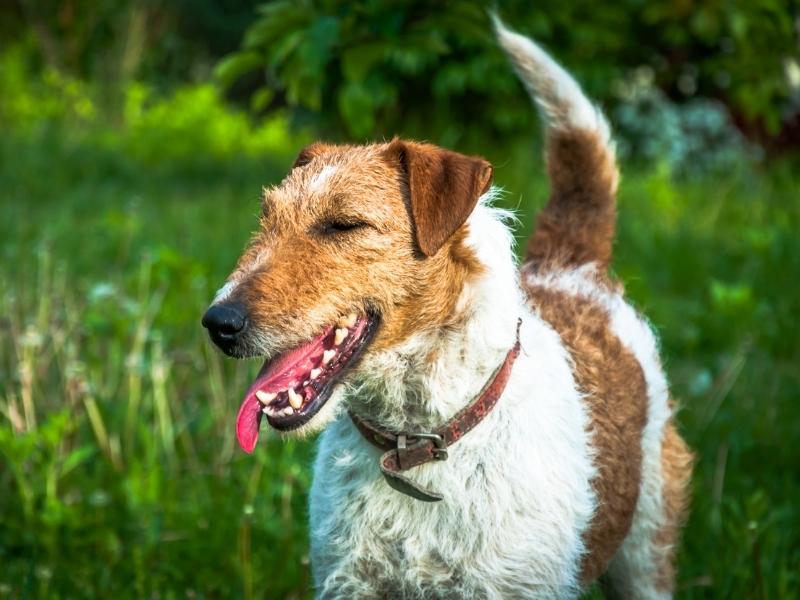
The Fox Terrier dog breed originated in England in the 1700s. They were hunting companions that helped their wealthy English owners on fox hunts. Hence the name ‘Fox’ Terrier.
Fox hunts were as much a ceremony as they were a sport. The hunters would gather in regal attire and bring horses, food, and drink out to the field. This serious affair placed a special level of importance on the Fox Terrier.
When the fox was spooked by the hunting party, they would run away and hide in their holes. The hunters would then release the Fox Terriers to go and provoke the fox to leave its hole.
This often required the dogs to dig around the foxhole which is why Fox Terriers are prone to be diggers. It also accounts for their strong prey drive so be careful letting them off-leash or else they might take off towards a squirrel or other critter.
Having lived with Terriers my whole life, I can attest that they are diggers and not great off-leash. Better keep them away from your flower beds!
Fox Terriers slowly transitioned out of the fields and into homes. The breed became popular as an everyday, household companion. They were brought over from England and introduced to the United States in 1879 [1]https://www.aftc.org/breed-history.
Fox hunting in England is now illegal. Even so, Fox Terriers remain a popular breed amongst many throughout the world. I encourage you to learn even more about the breed from the interesting video below.
[lyte id=’SfvypIaCPuk’ /]
Smooth vs Wire
An interesting fact about the Fox Terrier dog breed is that it is composed of two sub-breeds: the Wire Fox Terrier and the Smooth Fox Terrier.
The two are virtually one in the same besides the shape of the head and the coat type.
The Smooth Fox Terrier is sometimes referred to as a smooth. It has a pointed, or V-shaped, head and a smooth coat [2]https://www.akc.org/dog-breeds/smooth-fox-terrier/.
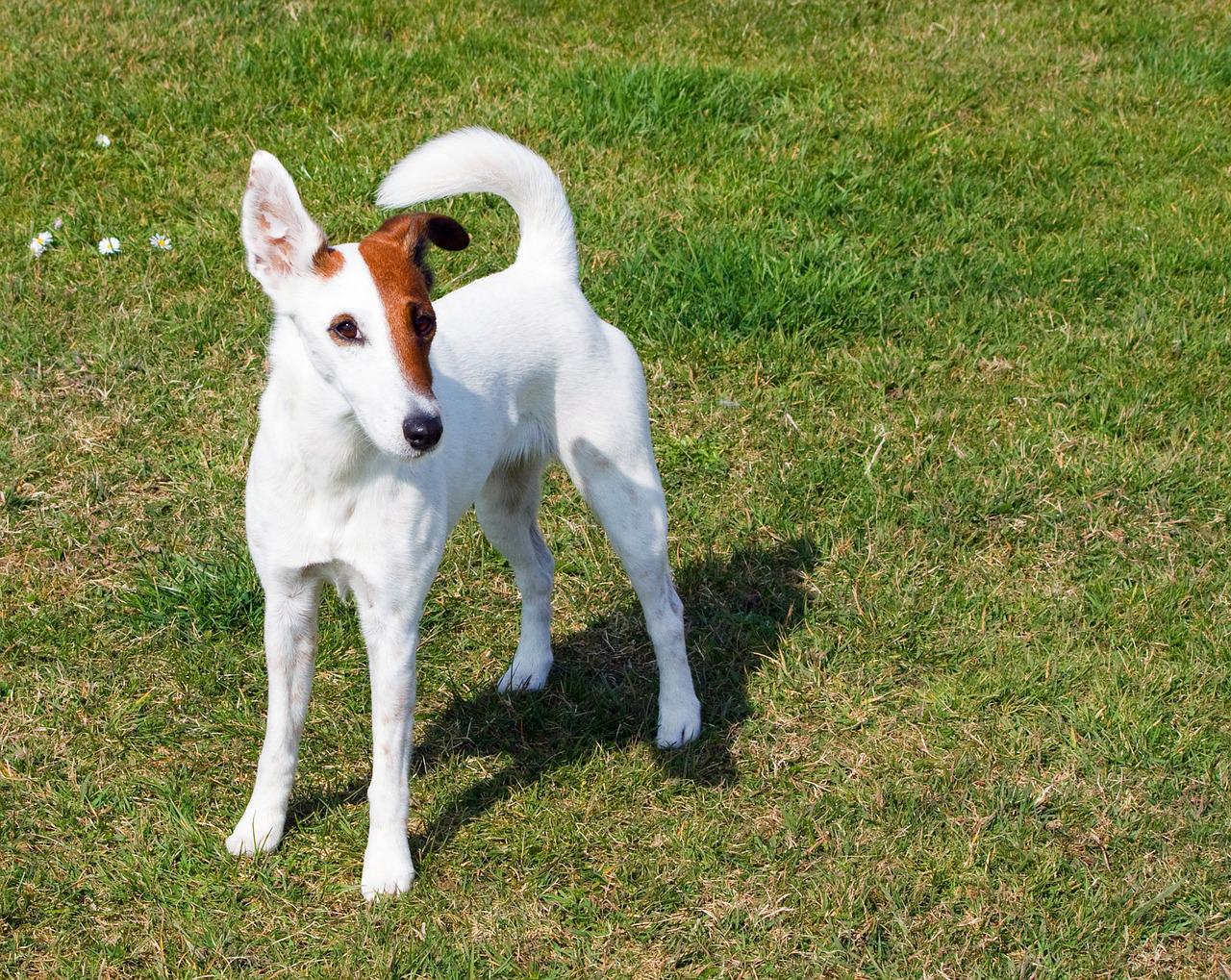
The Wire Fox Terrier, or wire, has a less pointed head and a wiry coat.
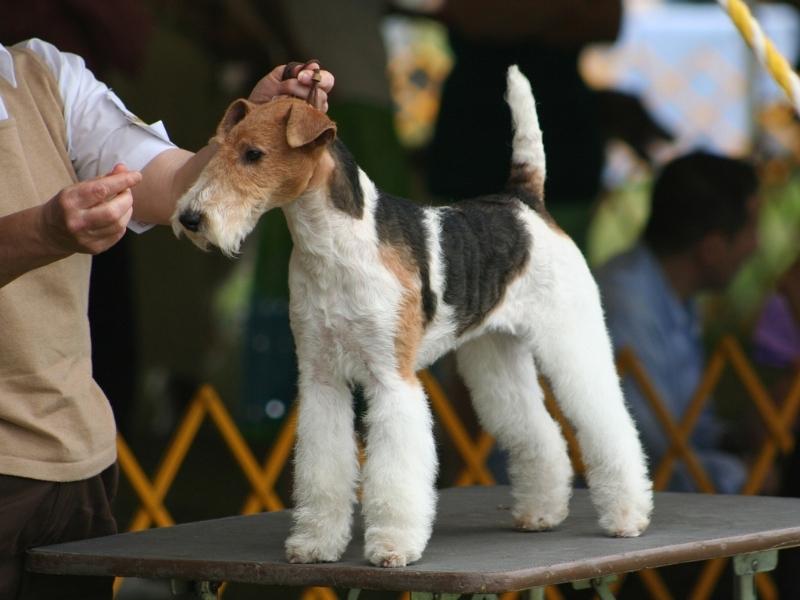
In England, the Fox Terrier breed was treated as two separate breeds. The distinction between the two breeds was not recognized by the American Kennel Club until the 1980s [3]https://www.akc.org/dog-breeds/smooth-fox-terrier/.
For this article, I will refer to both breeds (wire and smooth) simply as a Fox Terrier.
Poodle Breed History
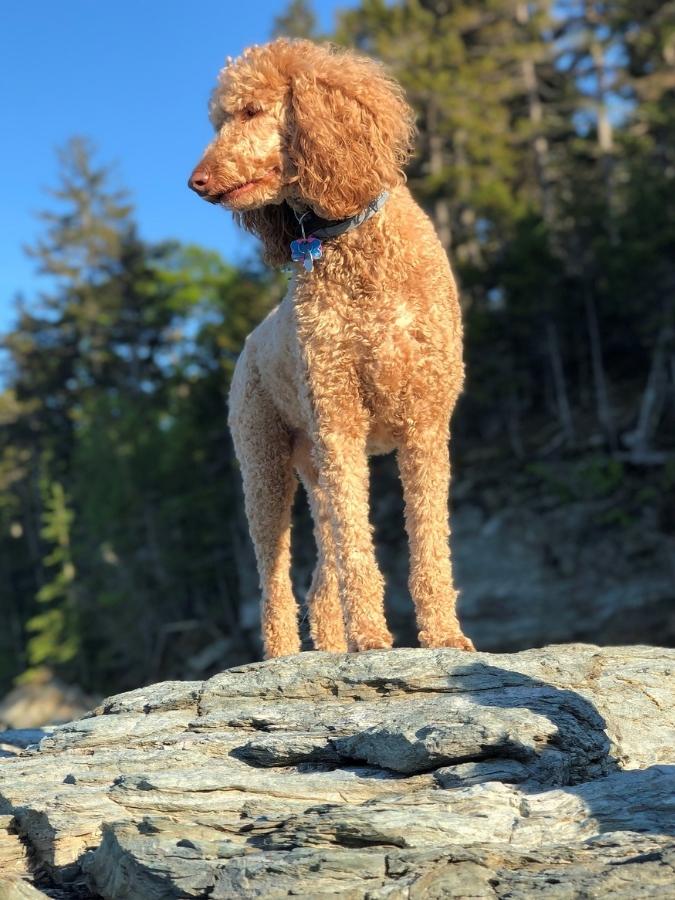
Poodles have a rich history that dates back more than 400 years ago [4]www.akc.org/dog-breeds/poodle-miniature/. Often mistaken for being France-natives, Poodles originated in Germany.
They were bred to be water-fowl hunters and retrievers. This enabled them to evolve as strong, athletic, and intelligent dogs. They have an eagerness to learn and perform specific duties, which means they respond well to training.
Similar to the Fox Terrier’s history, Poodles slowly migrated from the hunting grounds to people’s homes. Many Europeans, especially the French, took a liking to Poodles and the breed began to spread across the continent.
Poodles remained as hunting companions but they were also dispersed into other areas such as the circus and at the sides of French nobles.
Eventually, the standard-size Poodle was bred down to create the Miniature Poodle. Mini is now the most popular Poodle size [5]https://vcahospitals.com/know-your-pet/dog-breeds/miniature-poodle. In America, Mini Poodles were bred down even more to create the Toy Poodle.
No matter the size, Poodles are a staple breed across the world. A hypoallergenic coat paired with excellent qualities makes them highly sought after by many households. This is also the reason behind the surge of Poodle mixes, or Doodles, that has occurred in recent years.
Foodle Appearance
Foodles are not large dogs since they are a mix between two small breeds. The Mini Poodle has a curly coat that can come in a variety of colors. Fox Terriers can have either a wiry or smooth coat. Their colors are generally a mix of white, brown, and black.
Size
The Foodle is a small dog breed with its height averaging below 15 inches and its weight averages between 4 and 15 pounds. The size mainly is dependent on what size Poodle and Fox Terrier were used for breeding.
Toy Fox Terriers have a maximum height of around 12 inches and a maximum weight of 9 pounds. Toy Poodles are shorter with a max height near 10 inches.
They range in weight from 4-to 6 pounds. Therefore, a mix between both Toy breeds would produce a Toy Foodle that would be less than 9 pounds and no taller than 12 inches.
Coat
Their coats can either be thick and curly (similar to a Poodle) or sleek and fine (like a Fox Terrier).
The Foodle’s coat varies from pup to pup because of the hybrid breed. The coat could be thick, curly, and wavy – like that of a Mini Poodle – or it can also be thin and smooth – like that of a Fox Terrier.
The wiry coat of the Fox Terrier makes the Foodle a part of the wire-haired Doodle family.
The Foxypoo can come out as almost any color, from black, brown, tan, gray, white, cream, or, in often cases, a mixture or combinations of these colors.
Although the Foodle is small, it has large floppy ears and long skinny legs. It has a broad, robust chest and often looks rather shaggy. A Foodle dog has a long furry tail, big round dark eyes, a small, round (sometimes pointed) head, and a long muzzle.
Traits and Characteristics of the Foodle Dog Breed
Fox Terriers are loyal and watchful dogs with a relatively gentle demeanor. They are always on alert and can be heavy barkers, which can be reassuring since you will be alerted if any stranger is near your home. Luckily, Mini Poodles aren’t as loud as Fox Terriers so the Foodle mix makes for a great compromise between the two.
Both breeds are family-oriented and enjoy spending quality time with their owners. So if you’re on the lookout for a cuddly pup, then the Wire Poo might just be the right breed for you.
As I’ve previously mentioned, Foodles inherit a mix between the two parent breeds when it comes to all of the canine traits and characteristics. Since Foodles are a newer dog breed, there is not much data on their behavior and personality.
As with any breed, each litter and each dog is unique and there is no exact science on how each pup will turn out. However, we can make a good estimate based on breed tendencies.
The infographic below is a summary of the Foodle’s traits and characteristics. It is an average of the traits between the Mini Poodle and the Fox Terrier.

Foodle’s Temperament
The Foodle is an energetic and loving breed of dog. They have a huge personality and, despite their size, will take on any danger head-on – regardless of the size of the challenger. They are incredibly intelligent dogs that assist with training; however, they can be rather stubborn at times (thanks to their Terrier side).
When not properly stimulated and cared for, they will resort to negative behaviors such as excessive barking and chewing.
They do like other animals and can get along very well with them, but the Foodle must be introduced properly to the other animals and pets around the home from an early age to get used to each other.
The Foodle also startles quickly and will often bark at noises that are either new or strange to them. They should be exposed to such noises as early as possible to avoid anxiety later in life.
Foodle In A Family Home
Although they are energetic and make wonderful watchdogs because of their alert nature, they’re also great snugglers. Even though both parent breeds are quite energetic, Foodles, or Wire Poos, have somewhat of an “Off Switch” and are more than happy to cuddle up and sleep with their favorite humans after a day’s play.
Training And Exercise For A Foodle
A Foodle requires between 60 minutes and 90 minutes of high-intensity exercise daily. They are, by nature, rather energetic dogs and need regular exercise to avoid them resorting to behavioral problems. It is best to keep them on a lead when out and about, as they consider many animals, like squirrels and birds, as prey.
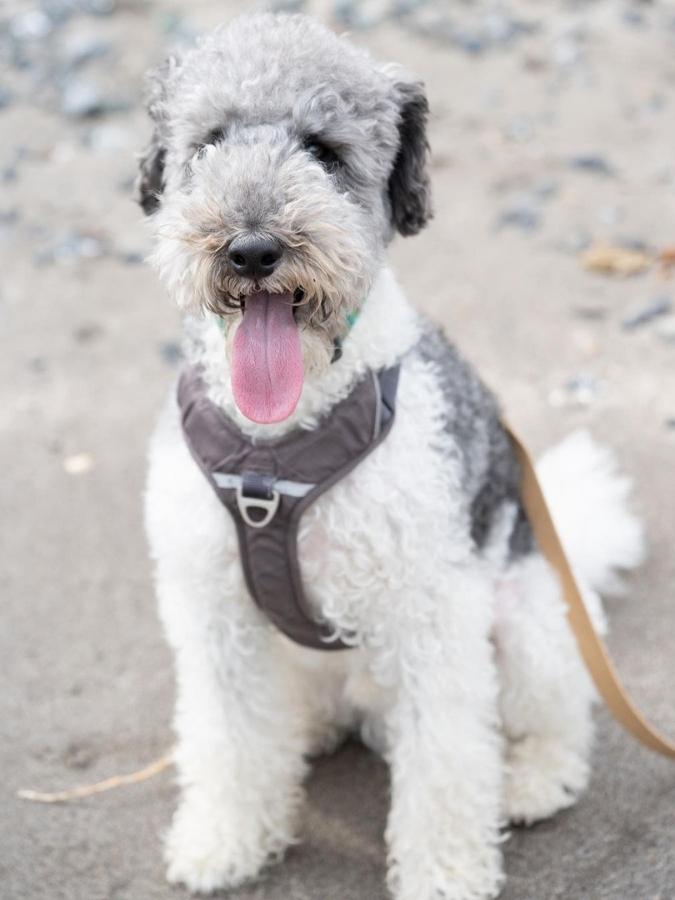
They are smart, which makes it a lot easier for training. Positive reinforcement is always recommended when it comes to training any animal.
It is important that the dog, from an early age, is exposed to early socialization to be more comfortable and used to outside and strange environments. It is also recommended to crate-train the puppy to avoid separation anxiety when you are not home.
Grooming A Foodle
Being so small – it truly doesn’t take too long to groom a Foodle. Their coats will be dependent on the genetics they pick up (the fur could be long and curly like a Poodle or short and sleek like a Fox Terrier, or, often, a combination of the two.)
It is important to brush the pup several times a week with a slicker brush to avoid the hair from matting. It is advised to bathe the dog every 8 to 12 weeks.
The Cost Of A Foodle
The price of a Foodle is not too hefty, considering the general price of a designer dog (such as a Labradoodle, which reaches well into the thousands). It is estimated that a Foodle can cost anywhere between $300 and $500.
It is not a common breed, so Foodle (Foxypoo) breeders can be hard to come by. One suggestion would be to reach out to Foodle owners on social media to see where they bought their pups and for how much. There are several public Foxypoo Instagram accounts that would be a good place to start.
You can also join a Doodle dog Facebook group and connect with Foodle owners there. This will allow you to ask real Foodle dog owners about their recommended breeders, prices, ownership experience, etc.
Be cautious of any shady breeders and avoid puppy mills at all costs!
Foodle Dog Diet Requirements
Because the Foodle is so small – it does not require a large daily quantity of food like a bigger breed would require. It is recommended to feed Foodles small-sized kibble.
It is also recommended to try and stick to smaller-sized, low-calorie treats in training. A well-balanced diet high in nutrients is important to help keep the dog happy and healthy.
Little dogs also tend to eat little amounts a few times a day. The Foodle should be fed small amounts 3 to 4 times a day to assist with their speedy little metabolisms.
Final Thoughts
The Foodle, or Wire Poo, is without a doubt, an adorable creature and would make the perfect new addition to the family. Their larger-than-life personalities almost outweigh their exceptional cuteness.
Foxypoos are also rather surprisingly easy to look after – making it well worth considering adopting one of these gorgeous little guys and becoming their new forever home. The perfect new addition to the family, the Foodle is full of love, energy, and affection.
With their big dark eyes, big floppy ears, and the bravery of a lion, this little pup is bound to steal your heart. Since Foodles are a member of the Doodle family, you know you’ll bring home a loving, furry companion when you adopt one of these pups.
If you’d like to learn more about Poodle mixes, check out my complete guide to Doodle breeds.


